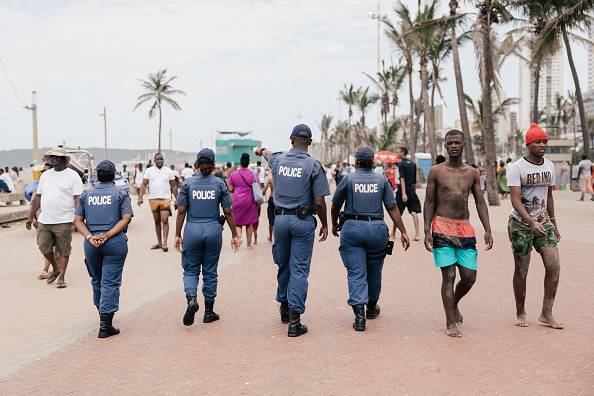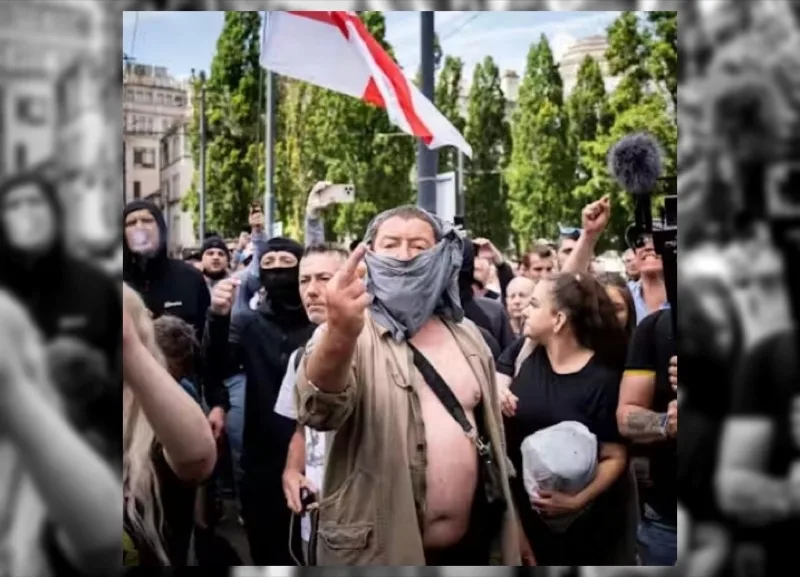Imane Khelif from Algeria is one of two women boxers at the 2024 Paris Olympics making the news – as ugly issues of gender testing and testosterone levels once again raise their head, as they did in the case of South African runner Caster Semenya. Khelif and Taiwanese boxer Lin Yu-ting failed a questionable gender test allegedly administered by the International Boxing Association (IBA) in 2023, but were declared fit for entry by the International Olympic Committee. Both are female and identify as such, yet one of Khelif’s opponents has fuelled a public outcry that she has an unfair advantage, even spurring claims she is transgender. We asked sport sociologist and former boxer Anne Tjønndal to explain what’s going on.
What’s the history of women’s Olympic boxing – and what social issues has it faced?
Boxing was one of the last summer Olympic sports to include women athletes, with women’s boxing being introduced to the Olympic programme for the London 2012 Games. In London, only three of ten weight categories were included for women: 51kg (flyweight), 60kg (lightweight) and 75kg (middleweight). In the same games, ten weight categories were included for male boxers. The marginalisation of women’s boxing continued throughout the Rio 2016 Games, maintaining three weight categories for women and ten weight categories for men. Things started to change after Rio, with the Tokyo 2020 games including five weight categories for women and eight categories for men. In Paris, men compete in seven weight categories and women in six.
One of the biggest controversies of women’s boxing at the Olympics took place before London 2012, when AIBA (Association Internationale de Boxe Amateur – now the IBA) suggested it be mandatory for women boxers to compete in skirts at the Olympics. The suggestion was met with resistance from women boxers globally, and while the issue remained undecided as late as January 2012, in the spring of 2012 it was finally announced that women boxers would be allowed to choose between competing in a skirt or in shorts.
Today, the most pressing social issues for women’s boxing at the Olympics relate to a lack of female representation in coaching and leadership, and a lack of research into the prevalence of harassment and sexual abuse of women in boxing.
Who is Imane Khelif and how did she come to be in the news?
Imane Khelif is a women’s amateur boxer from Algeria. She won a silver medal in the 2022 World Championship and a gold medal in the 2022 African Championship. In the Tokyo 2020 Olympic Games she reached the quarterfinals. Her amateur record stands at 51 fights (39 wins and 9 losses) at the time of writing.
In recent news, Khelif has become a victim of widespread misinformation and unfounded allegations regarding her gender. She has been falsely accused of being transgender, despite living her entire life as a woman and having a long-standing career in women’s boxing. The controversy originated from the IBA’s disqualification of Khelif from the 2023 World Championship. The IBA cited her failure to meet gender eligibility tests, but has not specified the nature of these tests, sparking rumours that Khelif is transgender and biologically male.
Read more: Misinformation, abuse and injustice: breaking down the Olympic boxing firestorm
The situation escalated after Khelif won her opening Olympic fight in 46 seconds against Italian Angela Carini. This victory led to an increase in social media abuse directed at Khelif. Carini’s comment after the fight, claiming she had never been punched so hard before, further fuelled the allegations. Although Carini later apologised to Khelif for her behaviour, the controversy was exacerbated when the IBA announced that Carini would receive prize money equivalent to that of gold medallists. The Italian Boxing Federation has since stated that it will not accept this money.
What is gender testing and where does testosterone testing fit in?
Almost all sports competitions are organised in sex categories: a women’s category and a men’s category. The segregation of men and women’s competitions is a founding principle of ensuring fairness in elite sports due to the athletic differences between men and women.
Read more: Caster Semenya: the legal and ethical issues that should concern us all
Gender testing has been used in elite sports competitions since the 1920s, and was initially introduced to ensure that men could not disguise themselves as women to participate in women’s sports. Looking at the history of gender testing however, the “sex-markers” being tested have changed as medical knowledge has evolved over the decades. Several of the gender tests have since been proven medically inaccurate and ethically flawed.
Testosterone testing is commonly used in gender testing today. Women athletes who have “too much” testosterone are sometimes met with a demand for artificial regulation of their testosterone level. Even if their bodies naturally produce more testosterone compared to other women athletes. The demand for artificial regulation of testosterone levels concerns two groups of athletes in particular: transwomen and women with intersex variations (women with difference in sex development or DSD). There is currently no indication to suggest that Khelif or Yu-ting are affected by DSD.
How much of this has to do with the feud between the IBA and the IOC?
The International Boxing Association (IBA) was previously the governing body of amateur (Olympic) boxing. But the International Olympic Committee (IOC) stripped it of its recognition due to persistent concerns over corruption and governance issues. For the Paris Olympics, a unit appointed by the IOC is organising the boxing competition. For the 2028 Games, a new organisation named World Boxing is expected to replace the IBA as the governing body of Olympic boxing.
Read more: Olympics: Namibia’s sprinters highlight a flawed testosterone testing system
The power struggles and tensions between the IBA and the IOC have raised questions about the IBA’s motivations in addressing gender eligibility issues in Olympic boxing. Many believe that the IBA is using the situation of Khelif as a strategy to undermine the IOC and garner global support.
How does gender and power play out in women’s boxing?
Historically, women have been marginalised as athletes, coaches, referees, and leaders in boxing. In most countries, boxing continues to be a male dominated sport, which often contributes to limiting women’s opportunities. A pressing issue today is the lack of women’s representation in coaching and leadership in women’s boxing.
Regarding gender eligibility in elite sports, women from the global south are over-represented in cases where the gender of female athletes is questioned.
Anne Tjønndal, Professor of Sociology of Sport, Nord University




















Discussion about this post